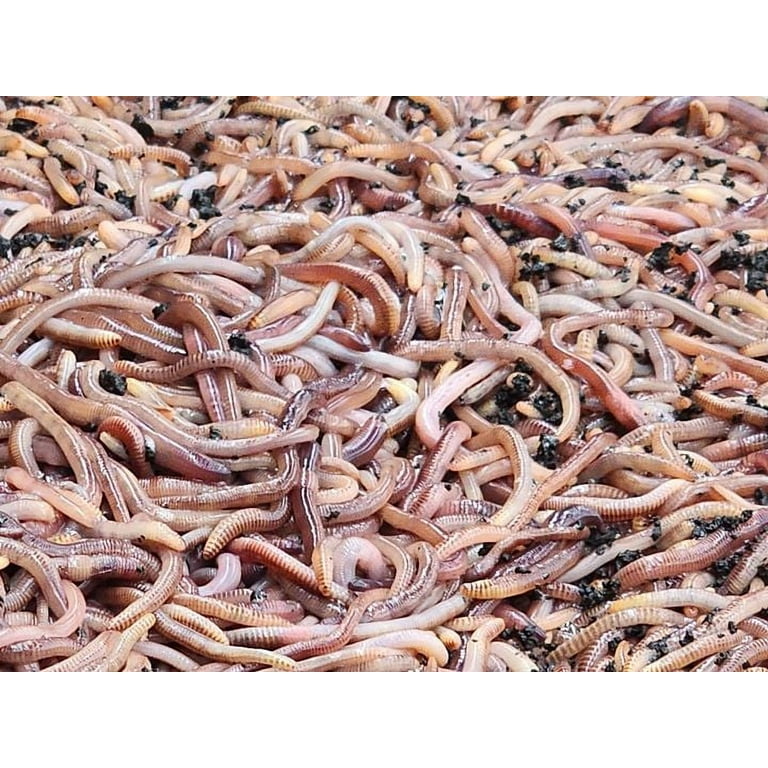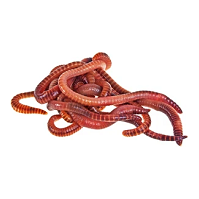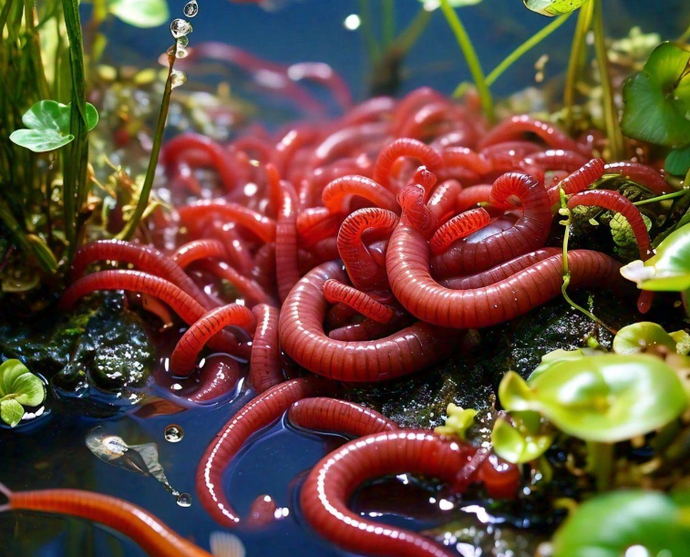The Duty of Red Wigglers in Lasting Gardening
The integration of red wigglers right into lasting horticulture techniques provides a compelling technique to improving dirt wellness and minimizing natural waste. These microorganisms not only convert cooking area scraps right into nutrient-dense compost via vermicomposting however also freshen the soil, advertising optimum conditions for plant development. As they break down complex organic materials, they proactively promote a thriving microbial ecological community crucial for sustainable farming. The ramifications of utilizing red wigglers expand beyond simple composting; their role in shaping an extra sustainable future warrants a much deeper exploration of their advantages and useful applications.
Understanding Red Wigglers
Red wigglers, clinically called Eisenia fetida, are a species of earthworm renowned for their function in lasting horticulture and composting methods - red wigglers. These worms grow in decomposing organic issue, making them especially effective in transforming cooking area scraps and yard waste into nutrient-rich compost. Unlike standard earthworms, red wigglers have a greater resistance for differing dampness levels and can thrive in atmospheres with plentiful natural product
(red wigglers)Classically, red wigglers are smaller than their earthworm equivalents, usually gauging between 3 to 4 inches in length. They have a reddish-brown coloration and have a fractional body structure that assists in their burrowing and feeding activities. These microorganisms are hermaphroditic, indicating each specific possesses both male and women reproductive organs, which allows for effective population development under optimal problems.
The habitat choices of red wigglers include wet, dark atmospheres abundant in organic web content, such as compost containers or worm farms. Their environmental role prolongs beyond composting; they are indispensable in aerating the dirt and facilitating vitamins and mineral cycling, which eventually adds to healthier yard communities. red wigglers. Understanding the biology and actions of red wigglers is important for those looking for to implement efficient vermicomposting in lasting gardening
Benefits of Vermicomposting
Vermicomposting deals many advantages that improve lasting horticulture practices and add to ecological health. One of the key benefits is the makeover of natural waste into nutrient-rich compost, which enhances dirt framework and fertility. The castings created by red wigglers are loaded with valuable bacteria and crucial nutrients, making them an outstanding natural plant food.
In addition, vermicomposting significantly decreases garbage dump waste. By drawing away cooking area scraps and backyard waste from land fills, this practice not only reduces methane discharges-- a powerful greenhouse gas-- yet additionally advertises a round economic situation, where waste is repurposed as a resource.
Another advantage is the enhancement of soil aeration and drain (red wigglers). The burrowing activity of red wigglers creates channels in the soil, allowing air and water to penetrate more conveniently, thus promoting a much healthier origin system for plants
In addition, vermicomposting can be done on a tiny range, making it obtainable for city garden enthusiasts and those with minimal room. This technique encourages ecological stewardship and recognition, as people come to be a lot more involved with their waste administration methods. Ultimately, vermicomposting represents a lasting, efficient, and environmentally friendly method to gardening that profits both plants and the world.
Exactly How to Start Vermicomposting
Beginning your very own vermicomposting system can be a satisfying venture that boosts your sustainable gardening practices. To start, choose a proper container, such as a plastic bin or wood box, with great drainage and air flow. The dimension will certainly depend upon the volume of cooking area scraps you produce; a bin of 10-14 gallons typically is adequate for a family.
Next, prepare the bed linens product. Shredded newspaper, cardboard, and coconut coir are excellent alternatives, supplying a comfortable environment for the red wigglers. Go for a bed linens depth of about 4-6 inches, which must be damp but not soaked.
Once the bed linen is established, present your worms. Red wigglers (Eisenia fetida) are the most appropriate for composting. Start with around one pound of worms for every single 2-3 pounds of cooking area scraps weekly.
Begin adding cooking area waste, avoiding meat, milk, and oily foods, as these can attract bugs and create odors. Regularly check the bin's dampness levels and temperature, guaranteeing it remains within the suitable variety for worm activity. With these first actions, you'll be well on your method to creating nutrient-rich compost for your garden.
Preserving a Healthy And Balanced Worm Bin
A prospering worm container requires constant treatment and attention to maintain an ideal setting for the red wigglers. Secret aspects to monitor include wetness degrees, temperature level, and food supply. Maintaining a moisture level similar to a wrung-out sponge is crucial; as well much water can cause anaerobic problems, while insufficient can dehydrate the worms.
Temperature is likewise important, as red wigglers grow in a series of 55 to 77 degrees Fahrenheit. Extreme temperatures can worry the worms, potentially causing death. Placing the bin in a climate-controlled area or using insulating products can aid manage temperature level variations.

Lastly, oygenation is important. Frequently turning the bed linens and using a fork or shovel can prevent compaction and advertise airflow, making certain a healthy and balanced, flourishing setting for the red wigglers. By adhering to these practices, garden enthusiasts can maintain an effective worm bin that sustains sustainable horticulture efforts.
Effect On Soil Wellness
Enhancing dirt health with making use of red wigglers is an essential aspect read this article of lasting gardening. These worms, understood clinically as Eisenia fetida, play an essential duty in improving dirt structure and fertility. By taking in natural matter, red wigglers damage down complex materials right into simpler compounds, a procedure known as vermicomposting. Completion product, worm castings, is abundant in essential nutrients, including nitrogen, phosphorus, and potassium, which are essential for plant growth.

(red wigglers near me)Researches have revealed that soils enhanced with worm spreadings show enhanced microbial activity and boosted fertility, leading to higher crop returns. By incorporating red wigglers into horticulture techniques, garden enthusiasts not only enrich their soil however additionally add to a more sustainable agricultural system, stressing the interconnectedness of soil wellness and environmental stewardship.

Final Thought
Finally, red wigglers dramatically add to lasting horticulture through their effective vermicomposting practices. Their ability to convert organic waste right into nutrient-rich garden compost improves soil fertility and supports a diverse microbial ecosystem. Furthermore, their burrowing task boosts dirt oygenation and water retention, benefiting plant health and wellness. By promoting waste decrease and promoting a circular economy, red wigglers become essential parts in green horticulture efforts, underscoring their vital duty in environmental sustainability.